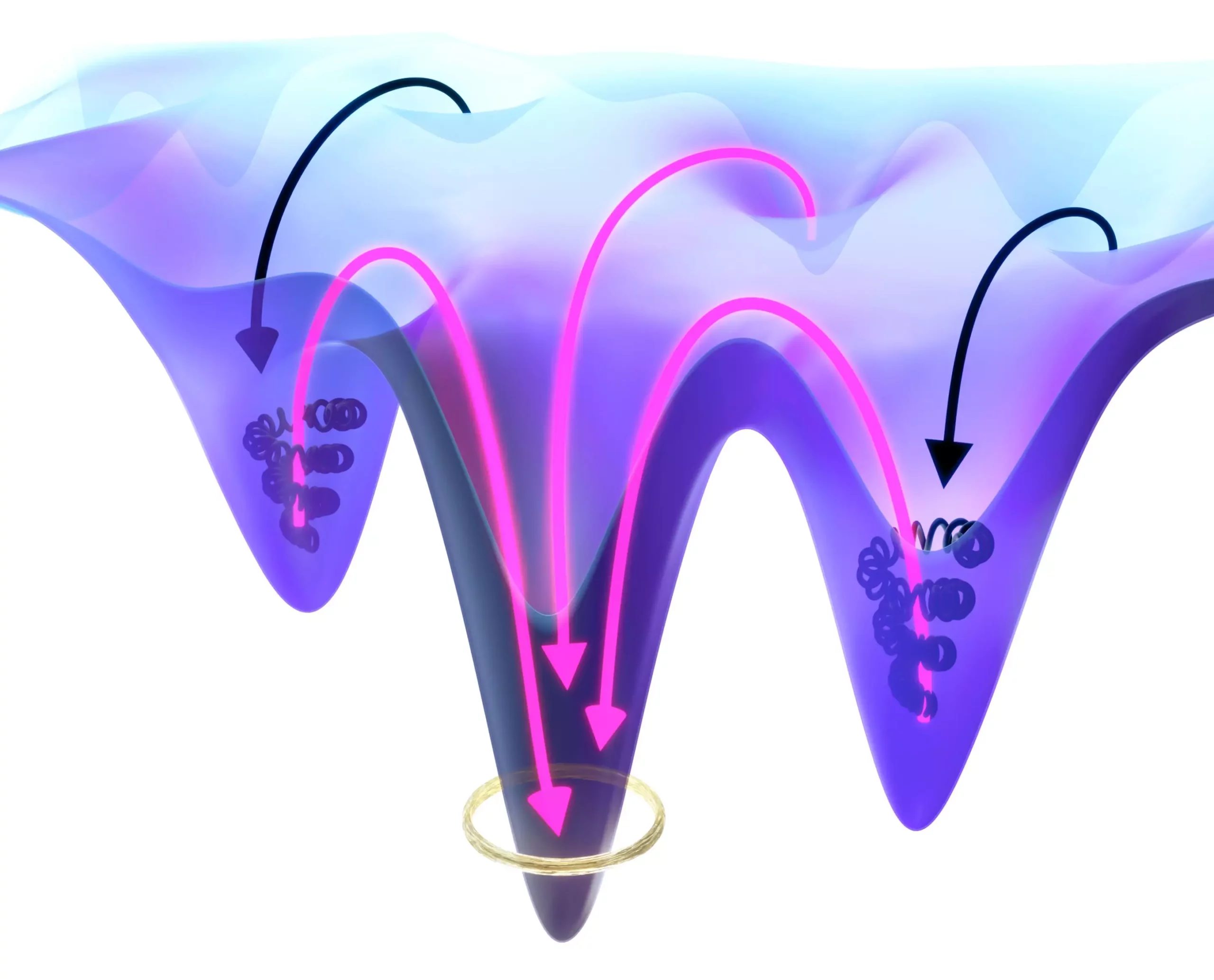The natural world and the realm of complex systems often find themselves trapped in seemingly insurmountable energy minima. Imagine a bead nestled in a tiny hollow on a rugged surface; without external help, it remains stuck, unable to traverse the energy landscape to find a more stable state. This phenomenon isn’t just a vivid analogy but a fundamental principle shared by biological molecules, proteins, and synthetic systems alike. Traditional understanding suggests that overcoming such barriers requires additional energy input—a process that is often inefficient or impossible without external intervention.
Recent groundbreaking research from the Max Planck Institute for Dynamics and Self-Organization offers a fresh perspective. The scientists propose that non-reciprocal interactions—where one component influences another differently than it is influenced in return—can serve as internal mechanisms to break free from these energetic traps. This concept reflects a paradigm shift, suggesting that systems can self-organize and escape static equilibrium states without external energy reinforcements. It highlights a potential blueprint for designing more intelligent, adaptive molecular machines and understanding biological processes at their core.
Dynamic Interactions as Nature’s Master Key
At the heart of this discovery lies the idea that non-reciprocal interactions mimic predator-prey dynamics, fostering sustained motion and pattern formation. In biological systems, such interactions are ubiquitous—from cellular signaling to the complex dance of proteins during folding—and appear to be an evolutionary masterpiece for navigating energy landscapes. By cleverly engineering analogous interactions in artificial systems, scientists aim to replicate these natural efficiencies.
The researchers emphasize that their proposed mechanism is broad and robust, capable of guiding molecules out of energy minima that would otherwise be insurmountable. This approach taps into the intrinsic dynamism of active matter—assemblies of particles or molecules capable of self-propulsion. When these entities engage in asymmetric interactions, they generate a form of internal “push” capable of overcoming static hurdles. This could be a game-changer in nanotechnology, where minute energy barriers often hinder the efficiency of molecular machines, or in medicine, where misfolded proteins cause diseases.
Beyond Evolution: Engineering the Future of Molecular Machines
One of the most profound implications of this research is its potential to emulate the extraordinary efficiencies of biological catalysts. Enzymes, honed through billions of years of evolution, operate with minimal energy wastage, often leveraging internal dynamic interactions. The scientists argue that their mechanism can achieve similar feats artificially, but with far less evolutionary time and effort. This opens avenues for designing synthetic systems that can adapt, self-heal, and operate in complex environments—traits long associated with living organisms.
However, it’s essential to critically examine the extent to which this theoretical framework can be practically implemented. The translation from conceptual models to real-world devices involves numerous challenges—controlling interactions at the nanoscale, ensuring stability, and integrating these systems seamlessly into existing technologies. While the promise is enormous, the journey requires rigorous experimentation and validation. Still, the core insight is undeniably compelling: by harnessing asymmetry and internal dynamism, we could unlock a new universe of adaptive, self-organizing systems that push the boundaries of what we think is physically possible.
In essence, this research challenges the fundamental assumption that overcoming energy barriers purely depends on external inputs. Instead, it points toward a future where internal design principles empower systems to self-organize and adapt, mirroring the elegance and efficiency of biological evolution itself.

